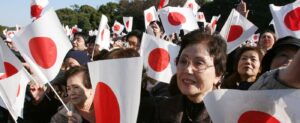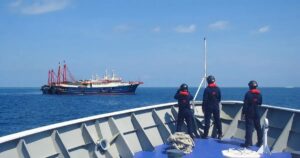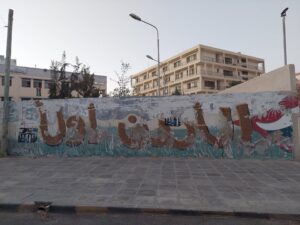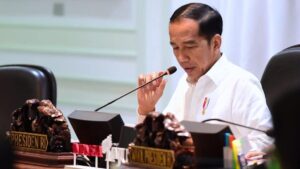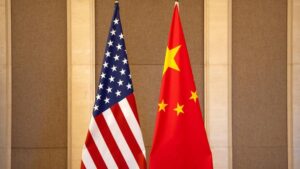Indonesia’s Joint Exercise Paradox: The Benign and Realpolitik Sides of the Super Garuda Shield
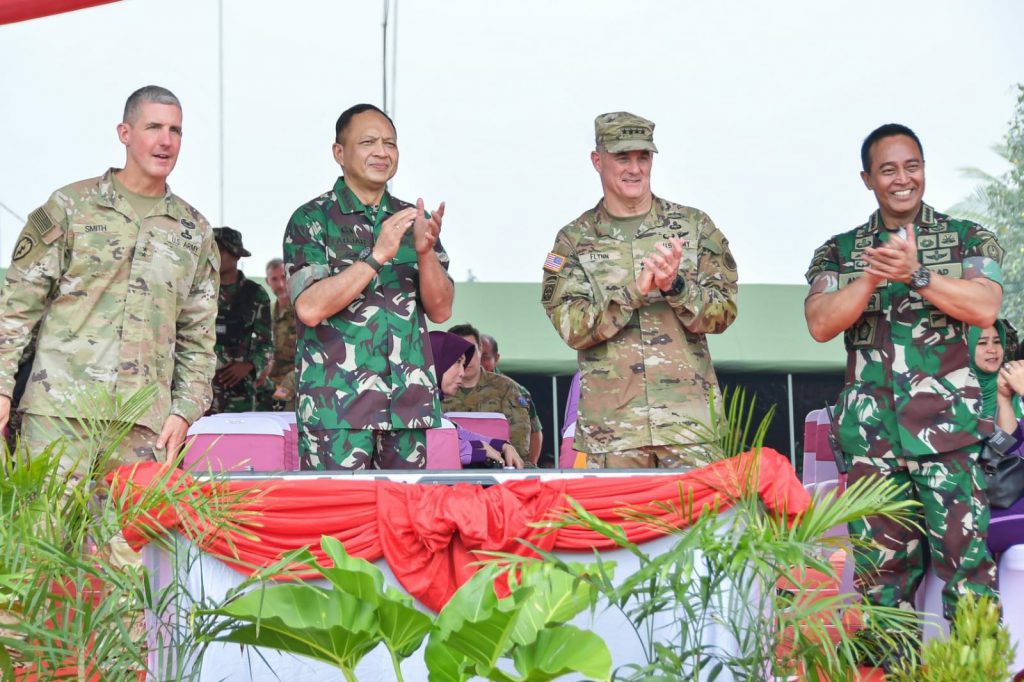
Super Garuda Shield opening ceremony. Foto: TNI Angkatan Udara
From the 1st to 14th of August 2022, the Indonesia National Defense Force (TNI) alongside the US Indo-Pacific Command (USINDOPACOM) organized the 16th Garuda Shield joint exercise, named Super Garuda Shield. Garuda Shield is an annual joint military exercise between the Indonesian Army and the US Army, though this event in the past has invited several other countries to participate in it. For 2022, the Super Garuda Shield invite twelve other countries, three participate actively alongside Indonesia and the USA, and nine observe the event. Indonesia, the USA, Australia, Japan, and Singapore actively participate in the joint exercise while Canada, France, India, New Zealand, Malaysia, Papua New Guinea, South Korea, Timor Leste, and the United Kingdom observe the event (TNI, 2022). This is the largest installment of the annual Garuda Shield joint exercise with more than 4000 military personnel and is considered one of the largest joint exercises in the Indo-Pacific region (U.S Embassy Indonesia, 2022). For the first time, the TNI tri-service, the Army, Navy, and Air Force participated in this joint exercise.
Super Garuda Shield takes place at Combat Training Center Baturaja, the Marine Training Combat Center in Dabo, Singkep, and the Combat Training Center in Amborawang. This multilateral exercise consists of many military activities, several of which are amphibious exercises, maritime security training, airborne operations, command post exercise, and many others. The goals of this multilateral exercise are to enhance interoperability, capabilities, confidence building, communication between military personnel, and cooperation with states that participate in it (Amirullah, 2022).
Looking at the goals of the Super Garuda Shield joint exercise, it can be concluded that they have benign intentions. However, joint exercise as part of defense diplomacy can also be interpreted as having realpolitik intentions. In other words, there is a darker side of joint exercise that lurks behind the benign aspects of defense diplomacy. This article will discuss both the benign and realpolitik aspects of the Super Garuda Shield. To discuss the benign and realpolitik sides of Super Garuda Shield, this article is organized as follows. The first section examines the concept of defense diplomacy and joint exercise. The second section discusses the benign aspect of Super Garuda Shield. The next section analyzes the realpolitik aspect of the joint exercise. The last section will provide the conclusion of this article.
Defense Diplomacy and Joint Exercise
Defense diplomacy is defined as the peaceful use of defense infrastructure as an instrument of foreign policy and security (Cottey & Forster, 2004, pp. 5-6). According to Drab (2018, p. 64) defense diplomacy has become an important instrument to achieve national interest. Currently, states have deployed defense diplomacy to achieve their national interest. Generally, states deployed defense diplomacy to build confidence, trust-building, conflict prevention and resolution, introduce transparency, change the mindsets of partners, reinforce common interests, and introduce cooperation in other areas (Tan & Singh, 2012, p. 221; Muthanna, 2011, p. 3). The use of the armed forces and other related defense infrastructures shows the symbol of cooperation between states (du Plessis, 2008).
Defense diplomacy tends to concentrate on these benign aspects of the concept. However, there is another side that is rarely explored. Cottey and Forster called this side the realpolitik of defense diplomacy. The realpolitik side of defense diplomacy is the opposite of the benign aspect of the concept that tends to emphasize cooperation between states. According to Chai (2020, p. 348), defense diplomacy enables states to deepen their mistrust toward each other. As such, defense diplomacy that is intended to build cooperation between states might result in the opposite goals.
Defense diplomacy consists of many activities. One of the activities that fall under the umbrella of defense diplomacy is joint exercise. This activity of defense diplomacy enables state armed forces to interact with others militaries. Joint exercises facilitate this interaction at the broader level. In essence, joint exercises enable interaction between military personnel at the operational and tactical levels. Joint exercises are also a platform for the benign and realpolitik aspects of defense diplomacy to occur.
According to Inkiriwang (2021a, p. 893) states have four motivations for participating in joint exercises: (1) strategic engagement; (2) confidence-building measures (CBMs); (3) capacity building; and (4) international reputation. These four motives can be considered benign motives of the joint exercise. On the realpolitik side, the motives for states to conduct joint exercises are (1) secrecy; (2) swaggering; (3) and show of force (Chang & Jenne, 2020, p. 341). As such, joint exercises produce a paradox of cooperation and competition between states inside the anarchical international system.
Benign Aspects
1. Strategic Engagement
Joint exercise is an instrument of foreign policy and security where armed forces can interact with each other. As such, joint exercises activate strategic engagement as part of defense diplomacy. Strategic engagement refers to a subset of defense diplomacy that prevents conflict between potential adversaries (Katz, 2020). In other words, strategic engagement enables states to build cooperative relationships with other states (Cottey & Forster, 2004, p. 7). According to Inkiriwang (2021a, p. 873), the military has the skills and knowledge that enable them to strengthen military-to-military relations when they interact with each other. Robust military relations are able to improve connections between nations (Ebitz, 2019), which enhance strategic engagement.
For Indonesia, defense diplomacy is considered the first line of defense (Laksmana, 2012, p. 263). As the first line of defense, defense diplomacy is considered to be an important instrument to prevent conflict. Joint exercises as key activities of defense diplomacy serve this goal. Multilateral joint exercises enable the military to interact with diverse foreign armed forces which is critical for strategic engagement (Inkiriwang, 2021b, p. 426). Super Garuda Shield as a multilateral joint exercise enables the TNI to interact with thirteen other militaries which are important for strategic engagement. The joint exercise enhances inter-state relationships among the participants. As such, the Super Garuda Shield enhances Indonesia’s strategic engagement with other states that participate in it.
2. Confidence-Building Measures
Super Garuda Shield is a means to build confidence amongst states that participate in it. Joint exercises enable not only leaders but also military personnel at the operational and tactical levels to interact with each other. This interaction between military personnel at the operational and tactical levels serves to build people-to-people confidence. In essence, multilateral exercise is able to facilitate CBMs amongst many participants (Inkiriwang, 2021b, p. 426).
Indonesia considered CBMs as one of the goals of its defense diplomacy (Gindarsah, 2016). Robust CBMs are able to decrease suspicion, threats, prevent conflicts, and de-escalate tension (Blake, 2016; Pramono, 2020; p. 190). Defense diplomacy effectiveness itself seems to be at the highest at the operational and tactical levels (Ghambir, 2021). As such, joint exercises that facilitate interaction between armed forces at the operational and tactical levels can be considered highly effective to nurture CBMs. Super Garuda Shield as a multilateral joint exercise builds people-to-people connections by involving cultural exchanges between the armed forces and nations that help build trust.
3. Capacity Building
Indonesia regards capacity building as an important goal of her defense diplomacy. This joint exercise provides valuable experience for the TNI as a whole. Super Garuda Shield joint exercise enables the TNI to learn and conduct military operations with other states. This enhances interoperability between militaries. Through Super Garuda Shield, the TNI is able to learn new doctrines, tactics, knowledge, and experiences with their foreign counterparts (Inkiriwang, 2021a, p. 891). The TNI enhances its capabilities in airborne operations, peacekeeping, land warfare, and many others. TNI is able to learn other’s military leadership techniques, standard operating procedures, and battle drills (Sachar, 2003, p. 414).
Most of the nations that participated in the Super Garuda Shield have a robust military. Operating with these armed forces gives the TNI an insight into the technologies in the field for the modernization of the military (Sachar, 2003, p. 417). In essence, the TNI was able to see directly many of the technology used by some of the most robust militaries in the world. Super Garuda Shield is able to help to build the capacity of friendly militaries to share tasks in the middle of the complexities of challenges the region is facing (Cottey & Forster, 2004, pp. 51-52; Muthanna, 2011, pp. 7-8). As such, the Super Garuda Shield has enhanced the TNI capacity and capabilities alongside other friendly nations simultaneously.
4. International Reputation
Joint exercises are able to promote TNI professionalism and traditions that enhance Indonesia’s international reputation (Inkiriwang, 2021b, p. 427). Super Garuda Shield as a multilateral joint exercise became a means to promote Indonesia’s international reputation. During the joint exercise, many other states can observe the capacity and capabilities of the TNI. The fact that the Super Garuda Shield is one of the largest joint exercises in the Indo-Pacific region has elevated Indonesia’s international reputation. The TNI is able to show itself as a competent partner to be in cooperation with other states, as shown in this joint exercise.
Enhancing Indonesia’s international reputation is important for the archipelago. A positive reputation is able to foster cooperation, while the opposite leads to conflict (Crescenzi, 2018, p.79). As such, Super Garuda Shield contributed to preventing conflict with other states, improving reputation, and serving the national interest of Indonesia. Thus, Indonesia’s joint exercise enhances the archipelago’s international reputation.
Realpolitik Aspects
1. Secrecy
States that participate in joint exercises engage in secrecy with each other. Secrecy not only means hiding military secrets but also uncovering other military information (Chang & Jenne, 2020, p. 340). Defense diplomacy activities serve as excellent grounds for intelligence gathering (Katz, 2020). As the host nation, Indonesia is vulnerable to this kind of activity. Super Garuda Shield is held at the TNI combat training center, giving states that participated in its access to Indonesia’s valuable armed forces grounds. Through this joint exercise also, other states can uncover TNI capacity and capabilities that might be studied by other states. These kinds of activities made foreign militaries able to counter the TNI and increase the vulnerabilities of Indonesia in the case of war.
On the other side of the same coin, the TNI can also exploit the Super Garuda Shield to discover other states’ military secrets. TNI is able to learn some of the most robust military doctrine, tactics, technology, and many other things. States can only rely on themselves to survive inside the anarchical international system (Waltz, 2001, p. 160). As such, instead of building the military of friendly countries to face regional challenges, Super Garuda Shield also nurtures the competitive nature of states due to anarchy.
2. Swaggering
Joint exercises facilitate states to conduct swaggering. In essence, joint exercises can be a tool for a state to bolster its status by showing its military capabilities (Sachar, 2003, p. 416). As defense diplomacy can enhance the state, government, and military pride (Charillon, et al., 2020, p. 273), countries conduct swaggering through joint exercises. As Inkriwang (2021a) has shown, Indonesia sees joint exercises as an opportunity to show the superiority of the TNI compared to other states’ counterparts.
Super Garuda Shield is not an exception to this. Indonesia was able to swagger by demonstrating its military capabilities by performing highly at the military exercise (Chang & Jenne, 2020, p. 339). Indonesia was also able to be proud of hosting one of the largest joint exercises in the Indo-Pacific. Joint exercises as part of defense diplomacy, are able to show a state power that is important for Indonesia as a status-seeking country. As such, Super Garuda Shield is an opportunity for Indonesia to enhance its prestige.
3. Show of Force
Show of force can be considered one of the motivations for states to conduct defense diplomacy. Joint exercises as essential activities of defense diplomacy facilitate those motives. This activity can be considered a deterrence by conveying signals to potential adversaries (Sachar, 2003, p. 414; Heuser & Simpson, 2017). According to Kuo & Blankenship (2022, p. 18) joint exercises with non-allies are capable of reducing conflict escalation, though they are less effective than conducting with allies. Through joint exercises, states are showing that it is capable of defending their country from any offensive actions by potential adversaries (Chang & Jenne, 2020, pp. 338-339).
Super Garuda Shield can be considered a deterrence. Deterrence against who? Analysts agree that Super Garuda Shield is a form of deterrence against China (Yahya, 2022; Vergun, 2022). As China becomes more aggressive in the South China Sea, Indonesia while not a claimant state, is faced with the reality of confrontation with China in the North Natuna Sea. Indonesia is confronted by its own insecurity against China that threatens the archipelago entitlement under the United Nations Convention on the Law of the Sea (Gindarsah & Priamarizki, 2021, p. 394). As such, Super Garuda Shield is able to send a signal to China that the Indonesian is capable of defending its rights as a maritime nation.
Conclusion
For Indonesia, the Super Garuda Shield can be considered a contradiction. On one side, Indonesia intends to build cooperation with states that participate in it. On the other side, Indonesia engages in the competitive nature of defense diplomacy as the result of international anarchy. As such, Indonesia’s motives on hosting the Super Garuda Shield are a mix of the benign and realpolitik aspects of defense diplomacy. As such, Super Garuda Shield fosters both benign intention and mistrust between states (Chang & Jenne, 2020, p. 348). Super Garuda Shield can be considered a major paradox of Indonesia’s defense diplomacy.
Reference
Amirullah. (2022, August 3). Panglima TNI Andika Perkasa Buka Latihan Super Garuda Shield 2022. Retrieved November 29, 2022, from https://nasional.tempo.co/read/1618684/panglima-tni-andika-perkasa-buka-latihan-super-garuda-shield-2022
Blake, R. M. (2016). Defence diplomacy for conflict prevention: A strategic analysis with reference to South Africa defence review. Master’s thesis. Pretoria: University of Pretoria.
Chang, J. Y., & Jenne, N. (2020). Velvet fists: The paradox of defence diplomacy in Southeast Asia. European Journal of International Security, 5(3), 332-349.
Charillon, F., Balzacq, T., & Ramel, F. (2020). Defense Diplomacy. In T. Balzacq, F. Charillon, & F. Ramel (Eds.), Global Diplomacy: An Introduction to Theory and Practice (pp. 267-278). Cham: Palgrave Macmillan.
Cottey, A., & Forster, A. (2004). Reshaping Defence Diplomacy: New Roles for Military Cooperation and Assistance. Abingdon: Oxford University Press for The International Institute for Strategic Studies.
Crescenzi, M. J. (2018). Of Friends and Foes: Reputation and Learning in International Politics. Oxford: Oxford University Press.
Drab, L. (2018). Defence Diplomacy – An Important Tool For The Implementation of Foreign Policy and Security of The State. Security and Defence Quarterly, 20(3), 57-71.
Ebitz, A. (2019, February 12). The use of military diplomacy in great power competition: Lessons learned from the Marshall Plan. Retrieved November 29, 2022, from https://www.brookings.edu/blog/order-from-chaos/2019/02/12/the-use-of-military-diplomacy-in-great-power-competition/
Ghambir, M. (2021, March 18). Defence Diplomacy and its Relevance. Retrieved November 29, 2022, from https://www.claws.in/defence-diplomacy-and-its-relevance/
Gindarsah, I. (2016). Strategic hedging in Indonesia’s defense diplomacy. Defense & Security Analysis, 32(4), 336-353.
Gindarsah, I., & Priamarizki, A. (2021). Explaining Indonesia’s Under-balancing: The Case of the Modernisation of the Air Force and the Navy. Journal of Asian Security and International Affairs, 8(3), 391-412.
Heuser, B., & Simpson, H. (2017). The Missing Political Dimension of Military Exercises. The RUSI Journal, 162(3), 20-28.
Inkiriwang, F. W. (2021). ‘Garuda Shield’ vs ‘Sharp Knife’: Operationalising Indonesia’s Defence Diplomacy. The Pacific Review, 34(6), 871-900.
Inkiriwang, F. W. (2021). Multilateral Naval Exercise Komodo: Enhancing Indonesia’s Multilateral Defence’s Diplomacy? Journal of Current Southeast Asian Affairs, 40(3), 418-435.
Katz, D. H. (2020). Defense Diplomacy: Strategic Engagement and Interstate Conflict. Oxon: Routledge.
Kuo, R., & Blankenship, B. D. (2022). Deterrence and Restraint: Do Joint Military Exercises Escalate Conflict? Journal of Conflict Resolution, 66(1), 3-31.
Laksmana, E. A. (2012). Regional Order by Other Means? Examining the Rise of Defense Diplomacy in Southeast Asia. Asian Security, 8(3), 251-270.
Muthanna, K. A. (2011). Military Diplomacy. Journal of Defence Studies, 5(1), 1-15.
Plessis, A. d. (2008). Defence Diplomacy: Conceptual and Practical Dimensions With Specific Reference to South Africa. Strategic Review for South Africa, 30(2), 87-119.
Pramono, B. (2020). Defense Diplomacy and Country Existance. Journal of Defense Resources Management, 11(2), 186-194.
Sachar, B. S. (2003). Cooperation in Military Training as a Tool of Peacetime Military Diplomacy. Strategic Analyis, 27(3), 404-421.
Tan, S. S., & Singh, B. (2012). Introduction. Asian Security, 8(3), 221-231.
TNI. (2022, August 15). Penutupan Latihan Bersama Super Garuda Shield. Retrieved November 28, 2022, from https://tni.mil.id/view-217660-penutupan-latihan-bersama-super-garuda-shield.html
U.S Embassy Indonesia. (2022, August 3). Super Garuda Shield 2022 Showcases Multinational Partnership and Joint Interoperability. Retrieved November 29, 2022, from https://id.usembassy.gov/super-garuda-shield-2022-showcases-multinational-partnership-and-joint-interoperability/
Vergun, D. (2022, October 11). Indo-Pacific Exercise Offers Effective Deterrence. Retrieved November 29, 2022, from https://www.defense.gov/News/News-Stories/Article/Article/3184720/indo-pacific-exercise-offers-effective-deterrence/
Waltz, K. (2001). Man, the State and War. New York: Colombia University Press.
Yahya, A. N. (2022, August 5). Latihan Bersama Super Garuda Shield Dinilai Strategis bagi Indonesia. Retrieved November 29, 2022, from https://nasional.kompas.com/read/2022/08/05/16335451/latihan-bersama-super-garuda-shield-dinilai-strategis-bagi-indonesia
Muhammad Gilang Rasyid is a student at Universitas Padjadjaran. He can be found on Instagram with username @gilang_rasyid

